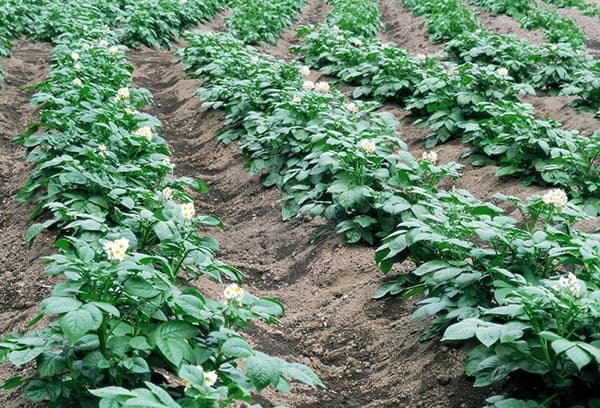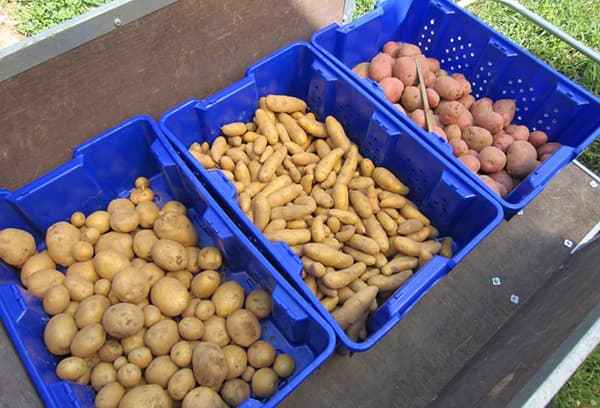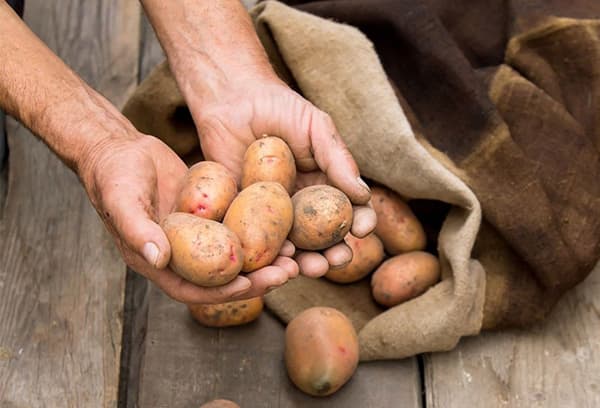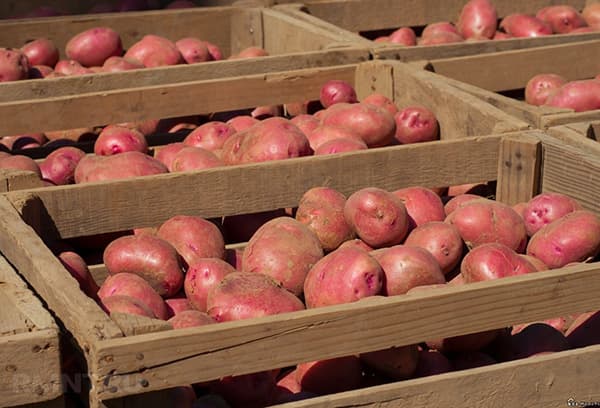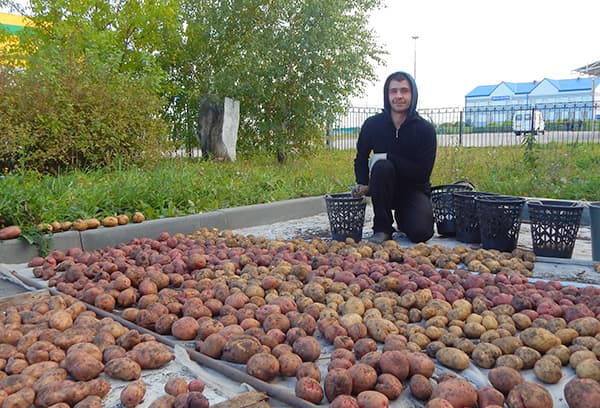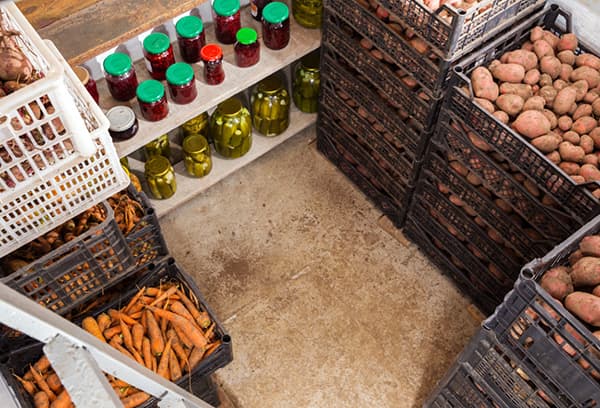How to store potatoes in the cellar until the new harvest?
Content:
With the onset of autumn, many owners begin preparing potatoes for the winter. It is best to store potatoes in a cellar, but a basement, an unheated garage, or even a refrigerator box under a window can be used for storage. The main thing is to choose a shelf-stable variety, properly prepare the room and vegetables for planting, and maintain optimal storage conditions throughout the winter.
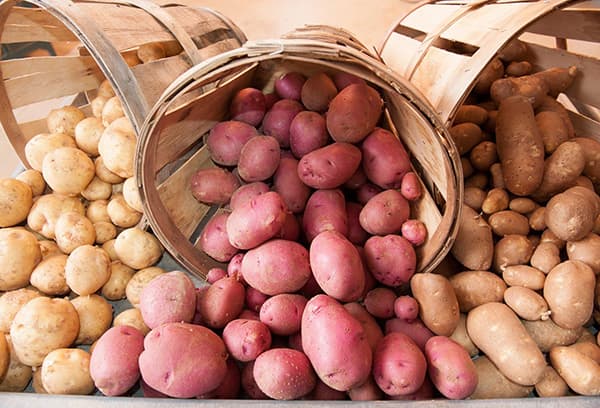
Which varieties are suitable for storage?
When storing potatoes, it is important to remember that only mid-late and late-ripening varieties will last until spring.
Of course, you can add early ripening vegetables, for example, “Aurora”, “Rocco”, “Pirol”, “Hozyaushka” and others. These varieties have excellent taste, but they won’t last long, maximum until the end of November, and then they will begin to sprout and deteriorate.
For long-term storage, it is better to take medium and late ripening varieties, for example:
- "Gatchinsky"
- "Gull",
- "Kolobok"
- "Slav",
- "Scarlet" and others.
Before purchasing potatoes, it is very useful to consult with local vegetable growers who have been growing this root crop for more than one year and know exactly which variety will be stored well until the next harvest, and which one is best used for its intended purpose as soon as possible.
Growing conditions affect shelf life
The keeping quality of potato tubers directly depends on weather conditions, soil composition, applied fertilizers and other nuances of cultivation.
- Vegetables grown in cold, rainy weather will be twice as bad as crops harvested after a sunny, dry summer.
- To keep potatoes better, they should be planted on dry soils with a high sand content. Crops grown on loam are unlikely to last until spring.
- The quality of potatoes is affected by the fertilizers that were fed to the plants during the growing season. Excess nitrogen contributes to an increase in sugar content - such a product is susceptible to various diseases, rots quickly and is not suitable for storage.
- Late blight affects the quality of potato tubers.
In order for the potato skins to become rougher and the tubers to become more resistant to damage, the green tops must be mowed a week before harvesting.
Preparing tubers for planting
Before putting the potatoes into the cellar or putting them in another place prepared for this purpose for long-term storage, it is necessary to properly prepare the tubers. Preparation consists of several steps.
Tuber sorting
First of all, you need to make sure that all products prepared for long-term storage are of good quality. Even a few rotten tubers that end up in the cellar can ruin the entire harvest.
Potatoes grown on your own plot should be divided into seed potatoes and those that will be stored “for food”. Tubers set aside for planting next year are kept in the sun for several days to increase resistance to rot, and then sent to storage.
Potatoes left for eating are carefully inspected, selecting whole, undamaged tubers without sprouts, and sorted into separate piles according to the following criteria:
- medium-sized vegetables, clean and whole, suitable for long-term storage;
- the largest tubers will last well for 1–2 months, then they will begin to dry out - they should be eaten before the New Year;
- First of all, you need to use small specimens that have been cut or eaten by pests - such potatoes will not be stored.
Sorting is the most important part of the work of putting potatoes in the cellar; it should be treated with all responsibility, otherwise you may be left without supplies.
Cleaning
The widespread opinion that potatoes should never be washed before storing them in the cellar is unfounded. Whether the potatoes were washed or not is not of fundamental importance, the main thing is to dry them well.
Washed potatoes do not pollute the cellar, it is convenient to work with them in the kitchen, and before storing, all damage, usually hidden under a layer of dirt, is clearly visible. Of course, such work is difficult to carry out when harvesting large volumes, since it requires time, a lot of water and certain conditions for drying. Therefore, experts advise washing potatoes only if they were collected after rain and the tubers are heavily soiled with dirt. In other situations, it is enough to clean dry vegetables from the soil by rubbing them with a cloth or glove.
Drying
Potatoes dug up or purchased at the market must be thoroughly dried before storing them in the cellar. To do this, after waiting for sunny weather, the vegetables are scattered in the yard, on an area near the cellar or on the balcony and ventilated for 10–12 hours.At night, it is better to collect the vegetables and bring them indoors, since morning dew will negate all efforts.
It would be good to keep the tubers under the sun for 2-3 hours. Ultraviolet rays will destroy germs and pathogens.
Preparing the cellar
The most suitable place for long-term storage of potatoes and other vegetables is, of course, the cellar. It can be installed in a separate room, subfloor of a house, basement or in an unheated garage.
The cellar is prepared several days before storing supplies. The work consists of the following stages.
- Check the humidity in the room. If the cellar is damp, it needs to be ventilated. You may need to build an additional hood or vent. In any case, the cellar must be dry.
- It is necessary to disinfect and dry containers for storing potatoes: wooden boxes, shelves, barrels and other devices. To do this, they are treated 2-3 times with a strong solution of potassium permanganate, after which they are dried in the sun.
- It would be useful to disinfect the walls of the room using whitewash, for the preparation of which take 2 kg of lime, 1 kg of copper sulfate, 150 g of salt, mix and dissolve in 10 liters of water. The resulting solution is used to treat the room twice with an interval of 7 days.
The more thoroughly the cellar is prepared, the better the potatoes will be stored.
When adding vegetables, remember that potatoes should not be kept next to cabbage, onions or carrots. But the proximity to red beets has a beneficial effect on the safety of the tubers. Beets draw moisture away, leaving the potatoes dry.
To store vegetables, nets, bags, special wooden boxes and compartments are used. The main thing is to ensure free air circulation so that the product does not cake, rot or rot.
Storage conditions in winter
In winter, potato tubers are in a state of deep dormancy, which usually lasts until early March. During this period, it is necessary to maintain optimal storage conditions: light, temperature, humidity.
- Illumination
One of the most important storage conditions for potatoes is darkness. In the light, the amount of solanine in tubers increases. This plant poison is found in all nightshades and in small doses does not affect human health. However, after three months of storing the tubers in a bright room, its content exceeds the permissible standards. Therefore, it should be dark in the cellar or garage, and it is better to additionally cover the vegetables with burlap, plywood or a piece of dark cloth.
- Temperature
Many people wonder at what temperature potatoes can be stored for the longest possible time. If the cellar is too warm, harmful microorganisms will be activated, causing the tubers to rot and eyes will begin to sprout. Potatoes will simply freeze in cold storage. After all, already at 0°C, the starch contained in this product turns into sugar - and the vegetable acquires an unusual sweetish taste. And at lower temperatures, the fruits turn black and become completely unsuitable for consumption.
For most varieties, the optimal storage temperature is from +2 °C to +4 °C. To maintain the temperature, you need to hang a thermometer in storage. To cool the cellar, open the windows and ventilation holes. If you need to increase the temperature, you can additionally cover the vegetables with straw, place bottles of hot water on the floor, or blow warm air from the room through the door.
- Humidity
The humidity in the room used for storing potatoes should be between 85% and 90%. Dry air will greatly dry out the tubers, and high humidity promotes the formation of rot and premature germination of the eyes.
To increase air humidity, you can use an electric humidifier or hang a wet cloth. To reduce the moisture content in the air of a storage facility, you must, on the contrary, use a dehumidifier, ventilate the room or place containers with quicklime, which perfectly absorbs moisture.
At the end of February, potato tubers begin to awaken from winter hibernation. From this time on, the temperature in the cellar is reduced to +1.5–2 °C. To do this, in the morning, open the windows and vents or place bottles with ice inside the room.
In order to preserve supplies until the next harvest, in the spring it is sometimes necessary to sort through the potatoes, throwing out rotten specimens.
